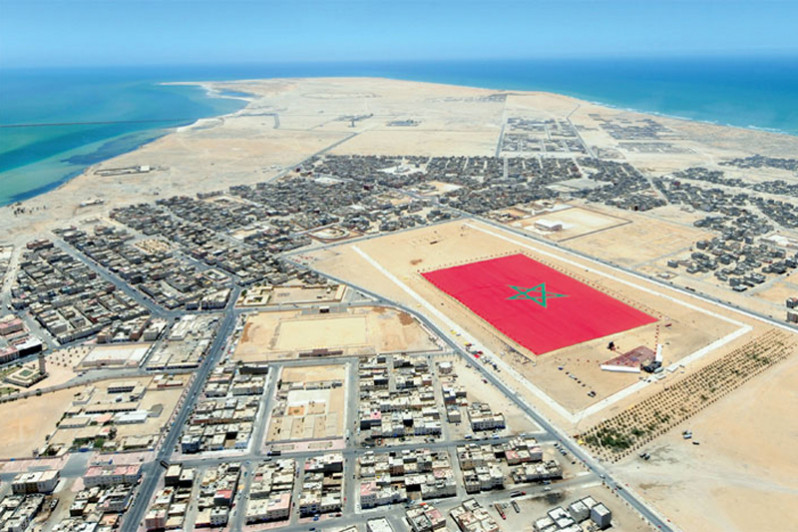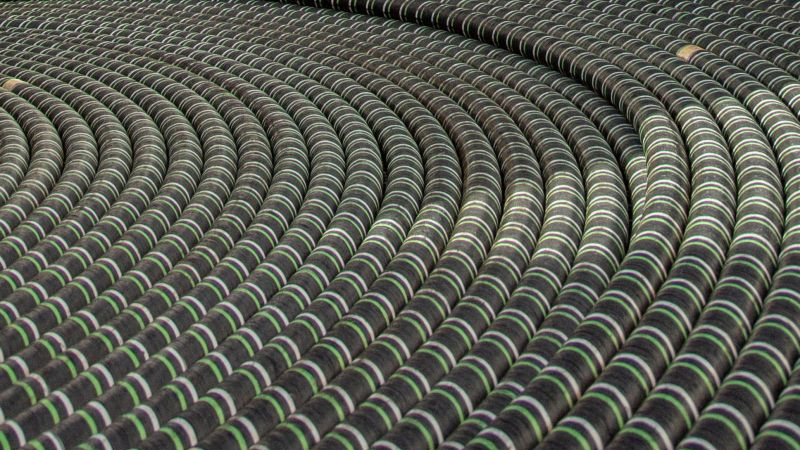SAMANDAĞ, Turkey: The jaws of an excavator attack the massive structure of the building and break the last sections still standing, which come crashing down in a cloud of dust.
“They don’t even give water!” Cagdas Can, 33, an environmental activist with the Yenidain Insa (Reconstruction) forum, protested the movement of trucks leaving the center of Samandag towards the vast open dump, near one of the longest beaches in Turkey. .
Located in the far south of Hatay province, hardest hit by the February 6 earthquake that devastated the south of the country and Syria, killing more than 55,000 people, the coastal town of Samandag lies in a cocoon of fine gray powder. drowns out the horizon.
Five months after the disaster the construction site is vast. The Turkish government has destroyed approximately 2.6 million buildings.
According to the United Nations Environment Program (UNEP), 116 to 210 million tons of debris must be removed – 1.8 million tons of debris accumulated at the Ground Zero site in New York after the collapse of the World Trade Center on 11 September 2001. ,
In this province bordering Syria, several landfills have been opened: Samandag, a monstrous brown pachyderm blown by sea winds, which is connected to the Mediterranean Sea, and the natural bird reserve of Mileha, which is home to Caretta caretta turtles and green turtles Chelonia is a nesting site for Mydas. Classified as an endangered species.
– Iron and metals –
Cagdas Cain alleges, “There were other potential sites… but the private companies that won the tenders (for clearing) come here to save fuel.”
“For them, only recovering iron and metals mattered,” he says, recalling how many of these manufacturing machines had failed in the days before the disaster.
In collaboration with them, he “formed a human chain to block the way of trucks. But the gendarmes intervened, eighteen people were arrested. My collarbone was broken.
“Nobody wears a mask. Activists say that neither tarpaulins are placed at the demolition sites, nor water is poured, nor are trucks tippers arranged, as mandated by law.
He regrets that the tired population has stopped organizing. Yet he is just as concerned as conservationists and doctors about the lack of precautions.
“Children are the first to get affected, they cough a lot and so do we. As soon as the wind blows, everything gets covered with dust”, says Mitthat Hoka, 64, who looks after his vegetable shop in the center of Samandag.
“We have to keep everything under wraps,” confirms 61-year-old retiree Mehmet Yazici, who passes by on a scooter. “We wipe tables 15 to 20 times a day. You have to do this every half an hour.
“We survived the earthquake but this dust will kill us,” says Michel Atiq, founder and president of the Samandag Environmental Protection Association. “We’re going to die from respiratory diseases and lung cancer” from all these hazardous materials.
– asbestos and lead –
Set up in the small white container that serves as his clinic in the center of Antakya, 26 km from Samandag, Dr. Ali Kanatli is already seeing “conjunctivitis, allergy outbreaks, asthma, bronchitis”…
But, above all, it is the long-term health consequences, including hazardous materials and cancer outbreaks present in the dust-dispersed debris, that worry Dr. Kanatli, the representative of the Turkish Medical Association in Hatay province.
Turkey didn’t ban asbestos until late in 2013, he recalls, and most of the buildings affected are old.
“Besides asbestos, we have heavy metals including lead in paint, mercury in electronic equipment such as televisions, household appliances…”, he explains.
The doctor points to another problematic dump northeast of Antakya, a valley of olive groves at the foot of the Nur mountains that dominate the city.
With approximately 17 million olive trees (in 2021, according to the Hatay Chamber of Agriculture), olive oil was the province’s primary source of income.

Organizer. Zombie aficionado. Wannabe reader. Passionate writer. Twitter lover. Music scholar. Web expert.




